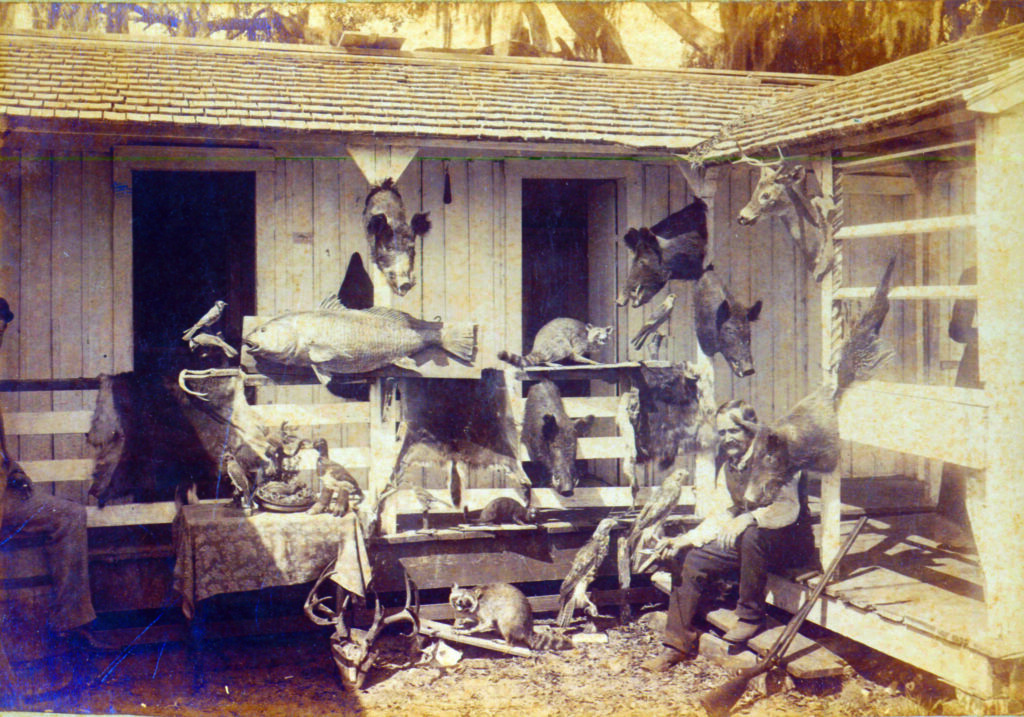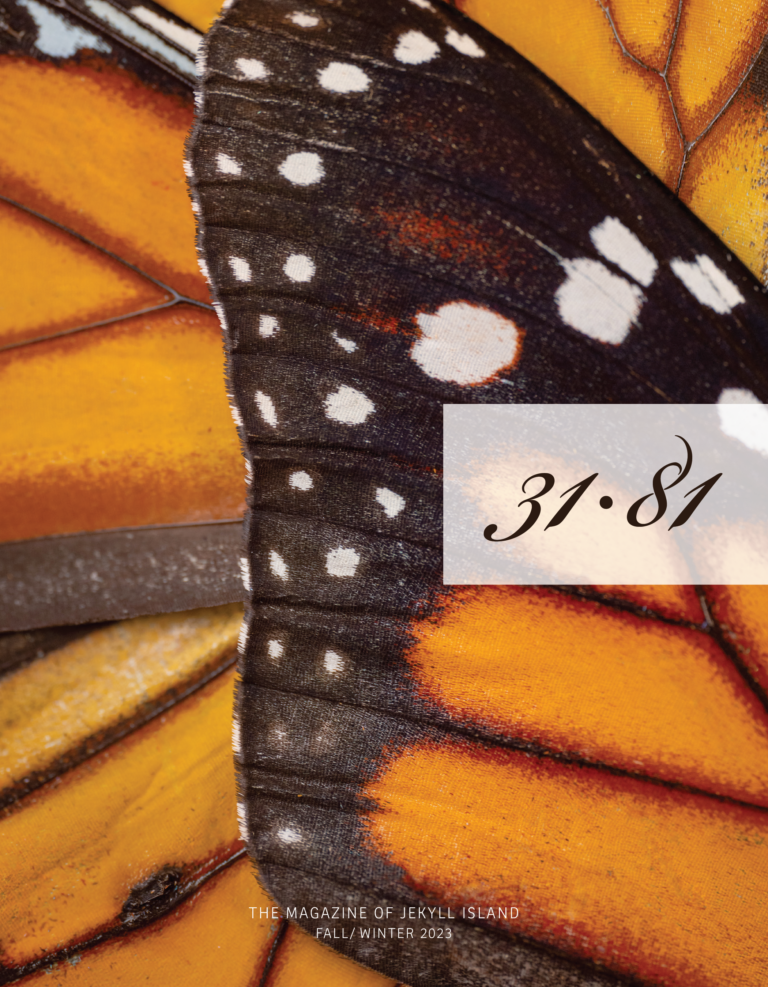Once part of Jekyll’s wild landscape, feral pigs are now nowhere to be found. It’s up to the island’s crackerjack crew of conservationists to keep it that way.
By TONY REHAGEN Illustrations by JOE WILSON
The Jekyll Island Authority conservation crew is an elite force. These plant and wildlife biologists and land management experts are guardians of the island’s fauna and flora, ensuring that everything flourishes in balance with the island’s human inhabitants. They are the protectors of plovers, dunes, and sea turtles, champions of the wetlands and live oak forests and all the animals therein. Mother Nature may take its own course. But make no mistake: These trained and educated professionals do their part, too.
Often, these men and women are Jekyll’s first and last defense against invasive species, the vegetation and beasts that would disturb that delicate peace. One example: Visitors might take note of the absence of feral pigs that plague other parts of Georgia, including nearby Brunswick just across the Brunswick River. Jekyll’s ground isn’t uprooted and disheveled by the swine’s desperate search for food. No muddy wallows or trees are rubbed bare of bark by the furry pests.
So, what’s the secret? How is it that Jekyll’s conservationists have cracked the code and solved the problem that has perplexed their peers all over the region?
“That’s a complex question,” says Joseph Colbert, the Jekyll Island Authority’s first wildlife biologist, as he leans confidently back in his office chair at JIA headquarters. “We haven’t done anything about it.”
A pause. Then Colbert laughs.”We haven’t had to,” he says, throwing up his arms.
While Colbert and his conservation colleagues have waged war on every invader from Chinese tallow to Cuban tree frogs, they have not faced off with the feral hog. As far as the JIA biologists can tell, there is no biological or ecological reason that the hog has yet to dip a tusk in Jekyll soil in the modern era. Instead, they can only speculate and stay alert in case the fuzzy foragers decide to mount a sudden assault across the causeway.
Or should we say “mount a sudden return?” After all, the reason we know there isn’t some natural or supernatural shield that keeps feral pigs off Jekyll Island is because they’ve been here before. Sepia-toned photographs from the height of the Jekyll Island Club era, which began in the late 1800s, depict wealthy hunters proudly posing beside the carcasses of their trophy hogs.
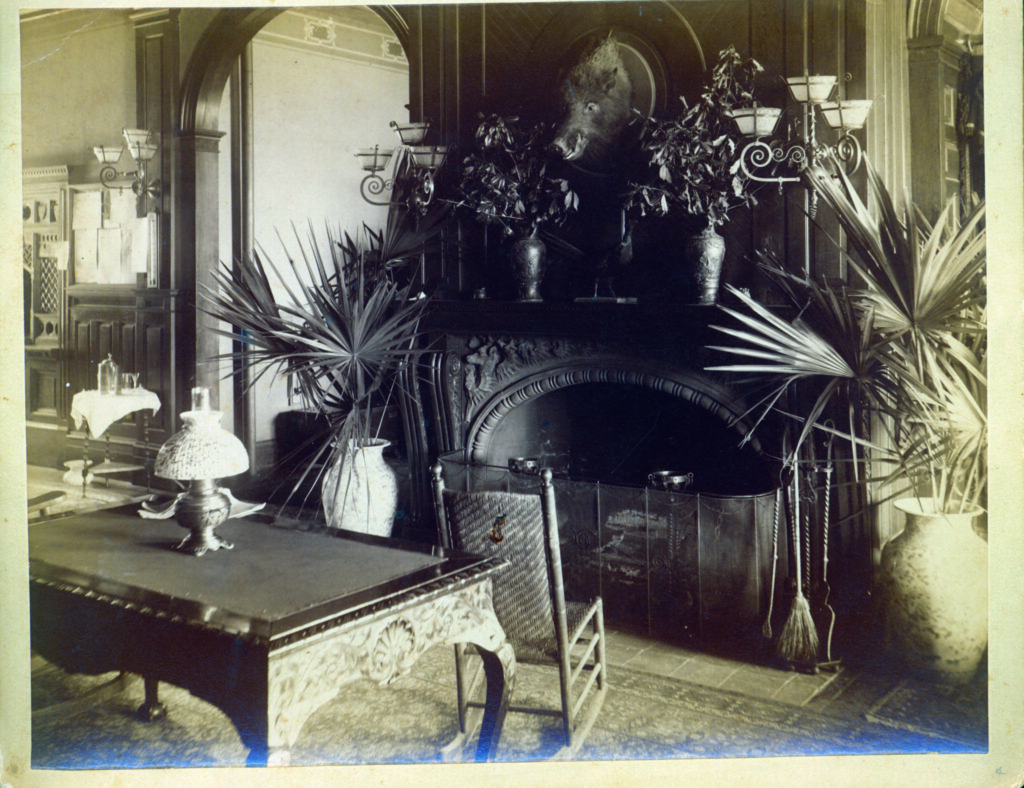
In the late 1800s, King Victor Emmanuel III of Italy wanted to express his gratitude to Lloyd C. Griscom, an American diplomat, so his highness sent Griscom a shipment of wild boar. Not knowing what to do with the beasts, Griscom pawned them off on J.P. Morgan, who “found sanctuary” for them on Jekyll, where they could be released as sport for the well-heeled gamesmen. Records suggest that there was already a population of feral pigs, with which the so-called Royal Boar of Jekyll Island bred. But even those “native” hogs that dwelled in the northern swamps almost certainly were not indigenous. “It’s important that we call them feral pigs and not ‘wild pigs,'” says Colbert. “They’re not wild in North America; they’ve been introduced. That’s why they’re a problem.”
Jekyll residents soon discovered why their imported quarry was a problem, especially as hunting waned in the early part of the 20th century. First of all, when they go unchecked and colonize, feral hogs tend to reproduce rapidly. A female can give birth to as many as three litters (each consisting of four to six piglets) in a single year. That’s probably why sightings of these animals and their descendants were reported on the island well into the early part of the State era (which began when the state of Georgia purchased the island in 1947).
And once they multiply, the animals make real pigs of themselves, and in so doing can ravage an entire ecosystem in no time. By digging in the ground for food, they uproot native species of plant, leaving only weeds. Wallowing in the shallow wetlands, they defecate in the water, turning the place into a cesspool of nasty diseases and bacteria. All of this devastates habitat for native species of plant and animal.
Feral swine are not exactly discerning diners, either. They’ll eat anything from smaller animals to eggs. “Any ground-dwelling species would be at risk,” says Colbert. “They could even go after sea turtle and shorebird nests.”
Of course, human infrastructure also would be impacted. Pets would be harassed and attacked. Gardens, crops, golf courses, and yards would be dug up. The pigs might even spread diseases like Swine Flu and bacteria like E coli to livestock and other animals.
Local archives contain no record of what finally spurred Jekyll residents to revolt against their porcine oppressors and drive them from Jekyll. But whatever they did, it worked. Today, no trace of feral hogs remains anywhere on the island (knock on live oak). “Whatever discussion took place, it was a good one,” says Colbert. “And it was the right choice.”
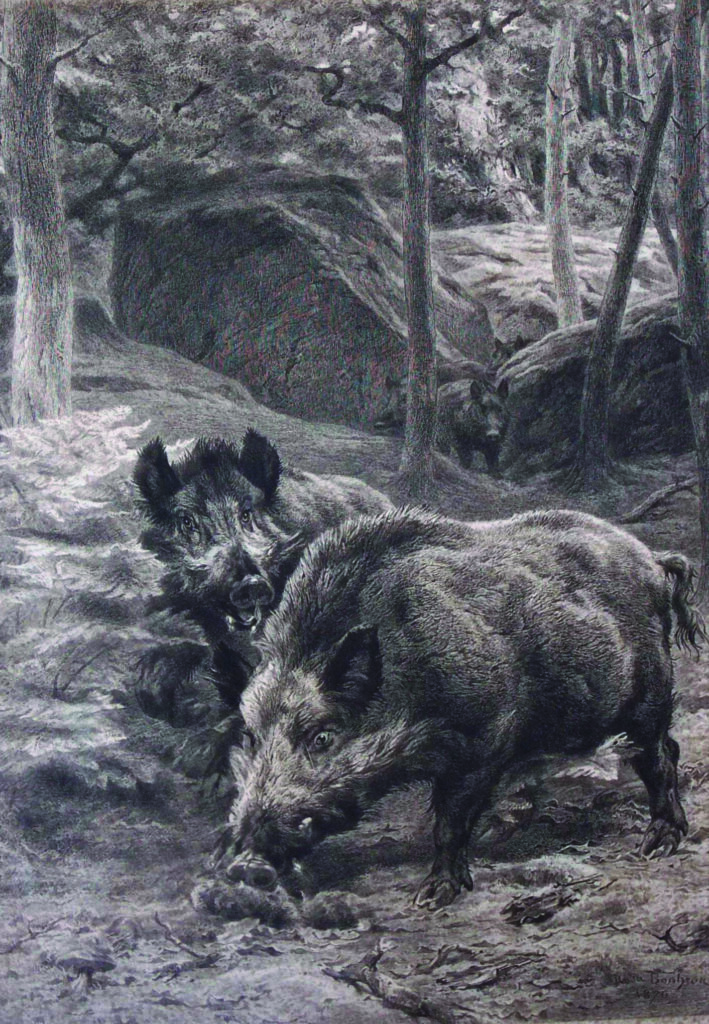
The members of the Jekyll conservation crew may not know exactly how islanders exorcized their hog demons, but that doesn’t mean they’re just sitting back and waiting for the beasts to stick their snouts in again where they don’t belong. “With any invasive species, there’s an old idiom: An ounce of prevention is equal to a pound of cure,” says Daniel Quinn, the JIA’s natural resources manager.
To keep the hogs away these days, the JIA conservationists have established a sort of defense for the island. Jekyll is different from other nearby barrier islands in that it stands apart. There aren’t four or five other islands from which the pigs can invade, as they have on Cumberland and Sapelo Islands.
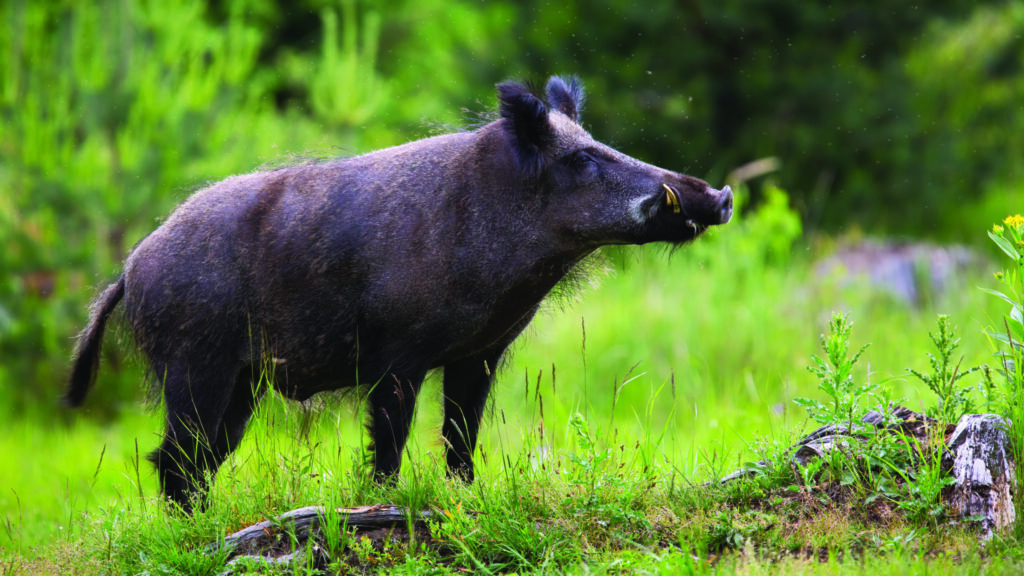
Jekyll’s only real entry point is the causeway that links it to the mainland. According to Colbert, surveillance cameras have picked up nighttime footage of swine encroaching at the far end of that narrow gateway. But as deceptively smart and sneaky as they may be, the good guys are confident the hogs have not yet crossed into Jekyll territory.
“They create a disturbance that is unique to them,” says Yank Moore, JIA Director of Conservation. “They may be stealthy and sneak around for a while, but you’ll soon notice the disturbance.”
The team of Colbert, Quinn, Moore, and Land Management Technician Morgan Pierce relies on the community to report signs of any disturbances; extensive rooting or digging, muddy wallows, tree rubbing, tunnels and trails through thick vegetation, droppings, and actual sightings of the pigs, dead or alive.
For now, the signs are good. For now, Jekyll remains free of the scourge of the feral swine. But the conservation crew is watching. They’re ready. Just in case.
A Trio of Interlopers
While they monitor the threat of feral pigs, the JIA conservationists have been fighting invasive species of plants and animals that already have a foothold on the island. Here are three of the biggest offenders.
Cuban tree frogs
It’s no surprise that humans are often responsible for introducing an invasive species to an area. Sometimes, though, the little buggers get in on their own. The multi-colored Cuban tree frog probably stowed away on ships and cargo planes, spread rapidly across Florida, and hopped its way up here, often hitching rides on the frames of vacationer’s vehicles. About the size of a common adult southern toad with big toe pads, they’ll actually eat adult native tree frogs that are smaller than they are. They can also carry diseases that spread to other wildlife, particularly reptiles. “It has a unique call that helps us key into their location,” says Pierce. “We want to remove them so our native frogs, which have no natural defense, can remain dominant.”
Cherokee rose
Yes, it’s the Georgia state flower. But there’s nothing Southern or particularly hospitable about this invasive Chinese native, also an ornamental brought by Club Era residents. At one time, the lovely white blossoms with the yellow centers lined the entire fence around the island’s Historic District. But they quickly climbed all over, slowly strangling trees and other plants. The rose also is a dangerous “fire ladder” that can enable flames to quickly burn up tree trunks and into the canopy. “It’s very hard to kill,” says Moore. “It grows so big so quickly that by the time you notice it, it’s 20 feet in the air.”
Chinese tallow
This Asian ornamental tree was brought here during the Club Era (1879-1947) for its exotic look and berries, used to make candles and soap. It spread quickly from homeowners’ lawns into the wild, where its falling leaves wreaked havoc on the pH levels in the soil and choked out other native plants. Extremely resistant to herbicides, the tallow has been all but eradicated by the JIA team through a decade-long hack-and-spray effort.
